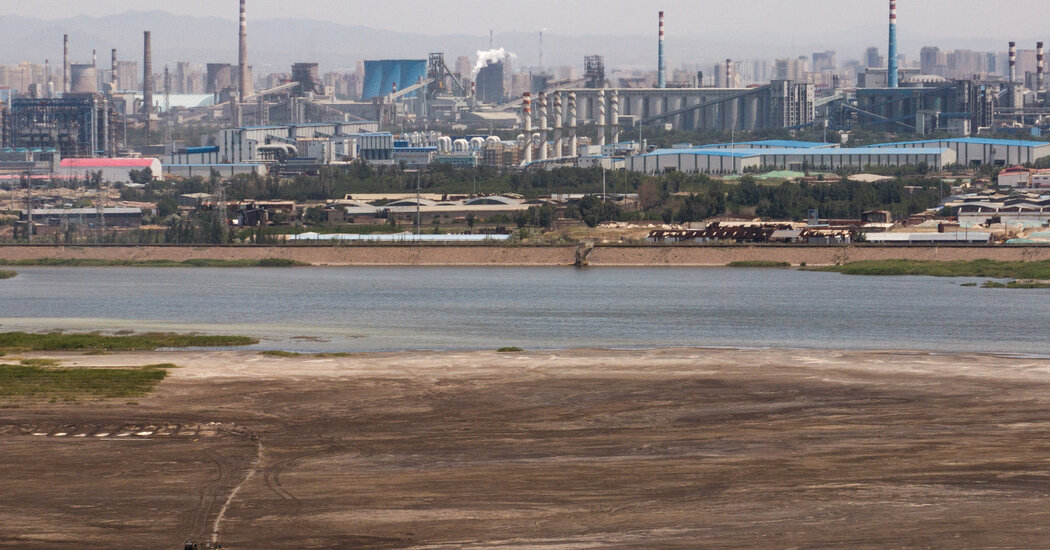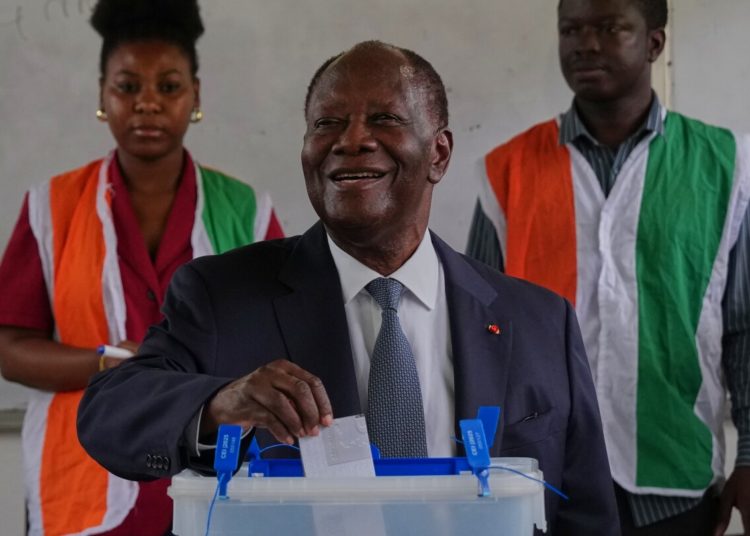Starting over a year ago, China has created an elaborate set of rules to cast a net over its exports of minerals the rest of the world can’t live without. These minerals with obscure names, mostly so-called rare earth metals, are vital for making a vast array of military and civilian goods, from fighter jets to semiconductors to cars.
The export controls have given Beijing enormous leverage because China is the dominant supplier. China is the sole producer, for example, of samarium, a rare earth metal used in many military applications. China is also the only country to master the difficult art of refining ultrapure dysprosium: The entire world’s supply, needed for superfast chips, comes from a single factory near Shanghai.
Perhaps most important, China makes 90 percent of the world’s rare earth magnets, used in electronics and electric motors. It is the only producer of some kinds of small magnets used in cars.
Beijing first invoked the new rules late last year. Officials suspended shipments to the United States of four metallic elements, but not yet rare earths, in retaliation after Washington placed tight limits on the export to China of the highest-performance semiconductors. China has since used export controls to put an increasingly tight grip on access to its rare earths.
China’s export controls have become a key point of contention with the U.S. government. They are expected to be discussed on Thursday when President Trump is set to meet with Xi Jinping, China’s top leader. Senior American policymakers expressed hope after trade talks on Sunday that China might defer enforcement of its new rules. China risks long-term damage to its own economy from the rules, by hurting the country’s image as a reliable supplier.
Here is how China built its regulatory embargo around critical minerals.
Oct. 1, 2024
The opening shot: Detailed documentation requirements.
China starts requiring exporters of rare earth metals to obtain detailed information from all overseas customers on exactly how the metals will be used in their supply chains.
-
Takeaway: The rule gives the commerce ministry a comprehensive road map of the kinds and quantities of rare earths that companies around the world need.
Dec. 3, 2024
Restrictions on four non-rare earth minerals.
China halts exports to the United States of four metallic elements that are not rare earths but still much needed. The commerce ministry restricts any further shipment of gallium or germanium, which are needed for manufacturing some kinds of semiconductors, and shipments of antimony or tungsten, used in ammunition and other military applications.
-
Takeaway: For the first time, China does not just limit exports directly to the United States but also bans companies in other countries from transferring materials to American firms.
April 4
Export controls on some rare earth metals and magnets.
China imposes export controls on seven of the 17 rare earth elements, as well as on magnets made with them, halting shipments to all countries, not just the United States. In the next two months, the commerce ministry approves very few export licenses. Automakers and their suppliers in the United States, Europe and Japan exhaust their inventories and in some cases delay production. The pace of license issuance picks up over the summer, but many overseas factories still face severe shortages.
-
Takeaway: More than six months later, exports remain halted for one rare earth, samarium, that is vital for military magnets. For the other six rare earths and for magnets, China grants six-month licenses. Many of these licenses will come up for renewal soon.
Oct. 9
Stopping transfer of rare earth technical secrets.
In one of a barrage of actions that day, China’s commerce ministry orders an immediate halt, except with its approval, of any transfer out of the country of technology or information needed for almost the entire rare earth process — from mining to recycling. To curtail efforts by other countries to develop their own rare earth sectors, the order prohibits a wide range of activities from the licensing of Chinese intellectual property to hiring personnel from China.
-
Takeaway: China deploys export controls broadly to try to safeguard its almost complete chokehold on the industry.
Oct. 9
Halting exports of rare earth processing equipment.
The commerce ministry also issues a long list of furnaces, chemicals and other equipment and materials that are essential for processing rare earths, saying that none are allowed to leave China without approval starting Nov. 8.
-
Takeaway: China is the main producer of equipment for rare earth refineries and magnet factories, so this could delay efforts by other countries to set up their own production.
Oct. 9
Blocking exports of five more rare earths.
The ministry adds five more rare earths to the list of seven that was issued on April 4 for which export licenses are required, as well as magnets and other materials made from them. The rule takes effect on Nov. 8.
-
Takeaway: By expanding the number of rare earths requiring licenses, China’s government would assert broader authority over global supply chains.
Oct. 9
Restricting battery manufacturing equipment.
The ministry issues a long list of battery-making materials that will not be allowed to leave China without special permission starting Nov. 8.
-
Takeaway: These changes would give China more clout over the world’s electric vehicle makers, which are major consumers of batteries, as well as electricity companies that need Chinese technology to build large grid-storage batteries for solar or wind energy.
Oct. 9
Prohibiting exports of diamond saws and similar gear.
The ministry stops the export of super-hard materials like diamond saws, which are used in manufacturing semiconductor and solar wafers, starting Nov. 8.
-
Takeaway: This could help China achieve leadership in semiconductor manufacturing and protect its 98 percent global market share in making solar wafers, the most important component of solar panels.
Oct. 9
Controlling the trade of rare earth magnets made outside China.
The ministry prohibits any movement without its permission across any national border of magnets made outside China if rare earths from China represent at least 0.1 percent of the magnet’s value, starting Dec. 1. The ministry’s permission is also required for movements of magnets made overseas with rare earths technologies originally developed by China.
The ministry wrote the rule ambiguously, so that it could apply to not only magnets but also practically anything manufactured outside China that includes traces of rare earths, from electric motors to car seats. Applications for ministry permission must provide extensive details on the products and how they will be used. Applications for military production will “in principle” be denied.
-
Takeaway: China, which has tilted toward Russia in the Ukraine war, could use this rule to prevent other countries from supplying Ukraine with weapons or from building their own militaries.
Oct. 14
Halting exports to Europe of Nexperia computer chips.
Nexperia, a company in the Netherlands that was acquired in 2018 by a Chinese consortium, announces that it had been ordered to halt exports from China of semiconductors. European automakers like Volkswagen soon begin running out of computer chips.
-
Takeaway: China, which acted after the Dutch government took control of Nexperia, shows again how it can use export controls to affect global supply chains.
Keith Bradsher is the Beijing bureau chief for The Times. He previously served as bureau chief in Shanghai, Hong Kong and Detroit and as a Washington correspondent. He lived and reported in mainland China through the pandemic.
The post Step by Step, How China Seized Control of Critical Minerals appeared first on New York Times.




